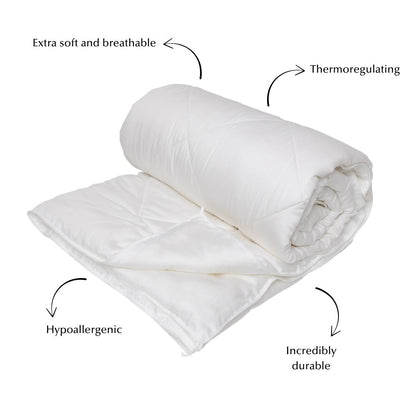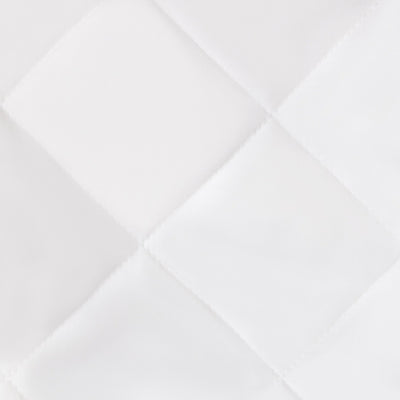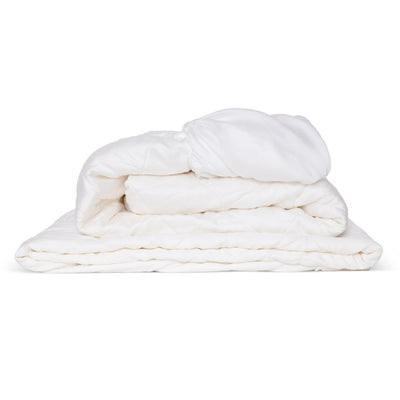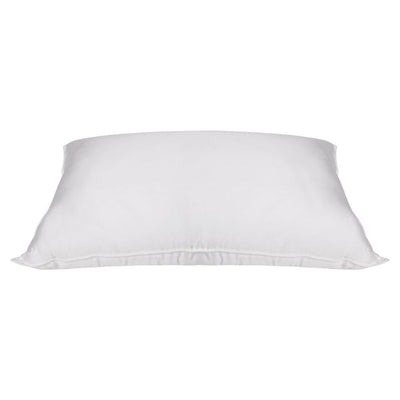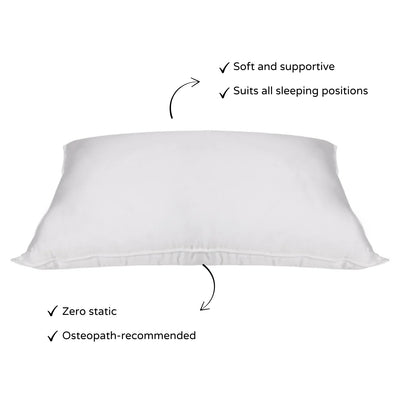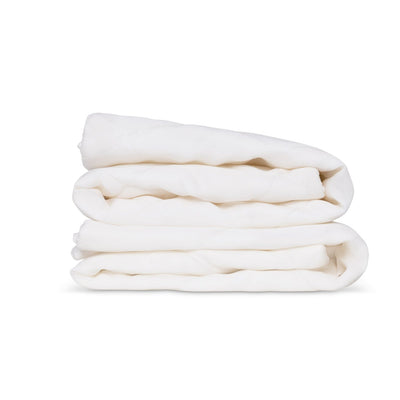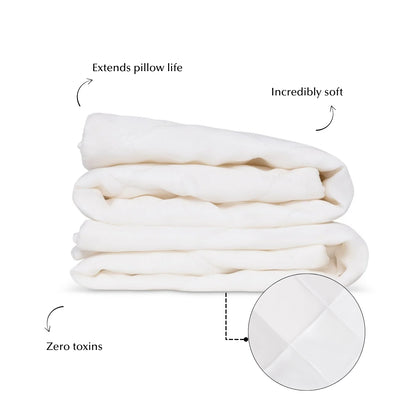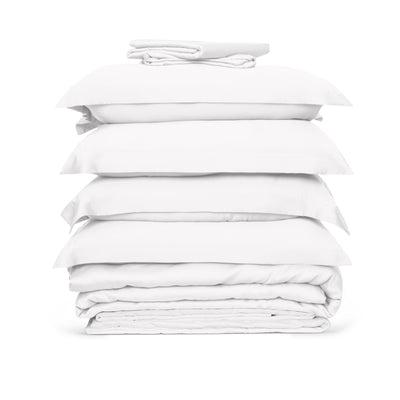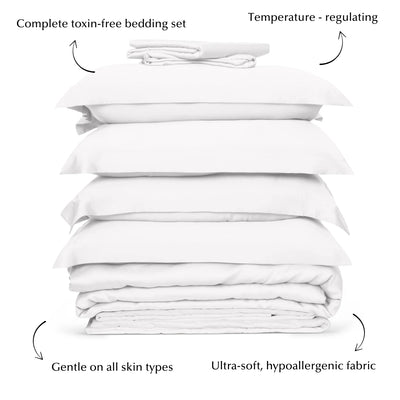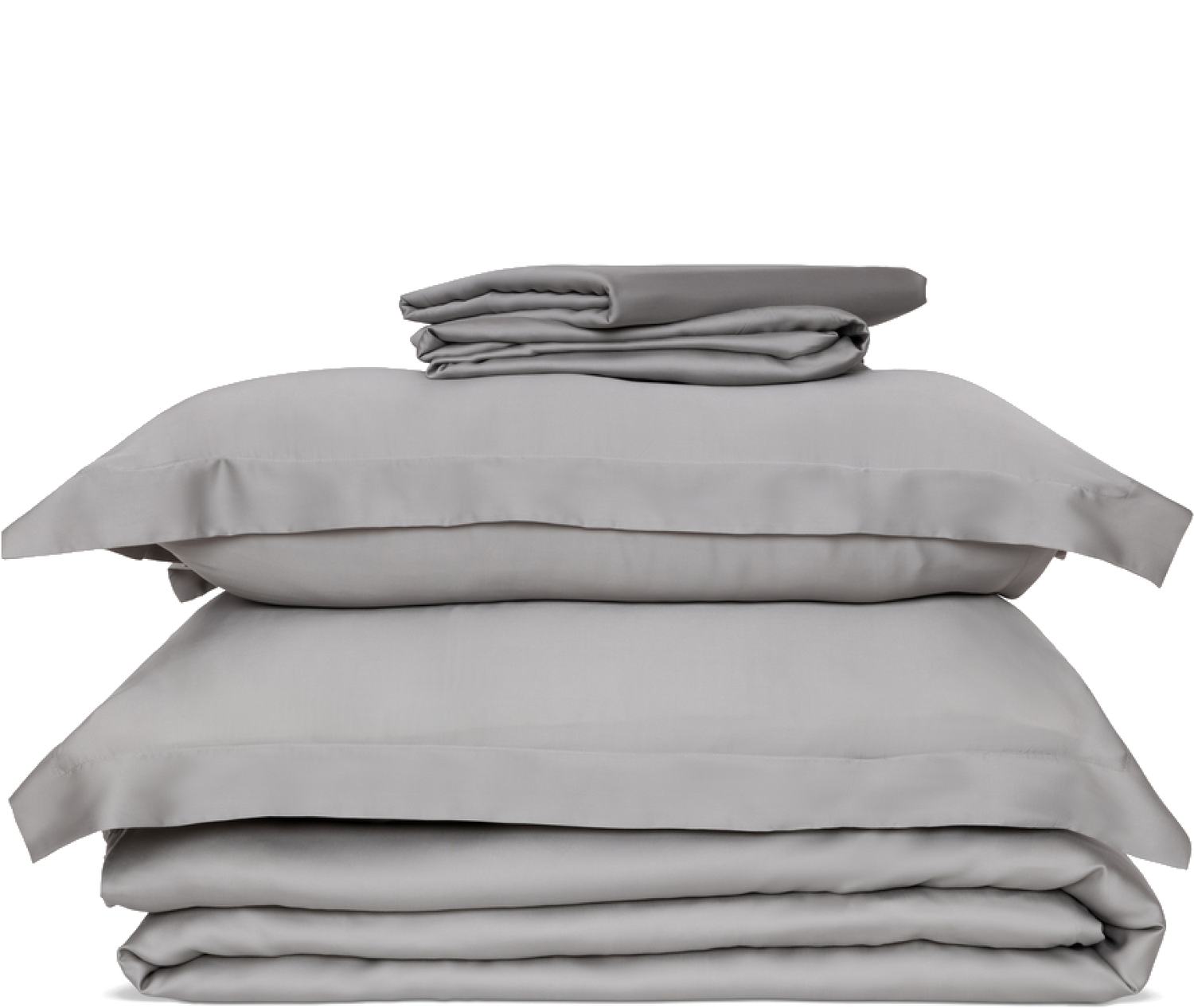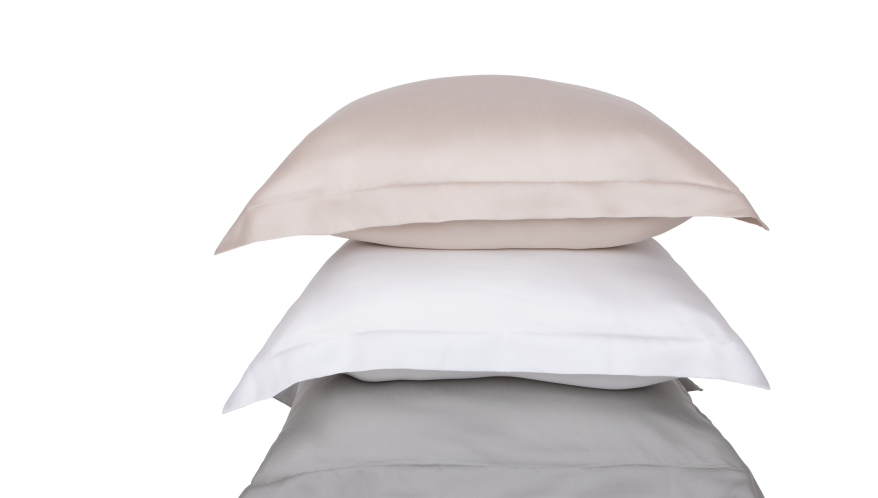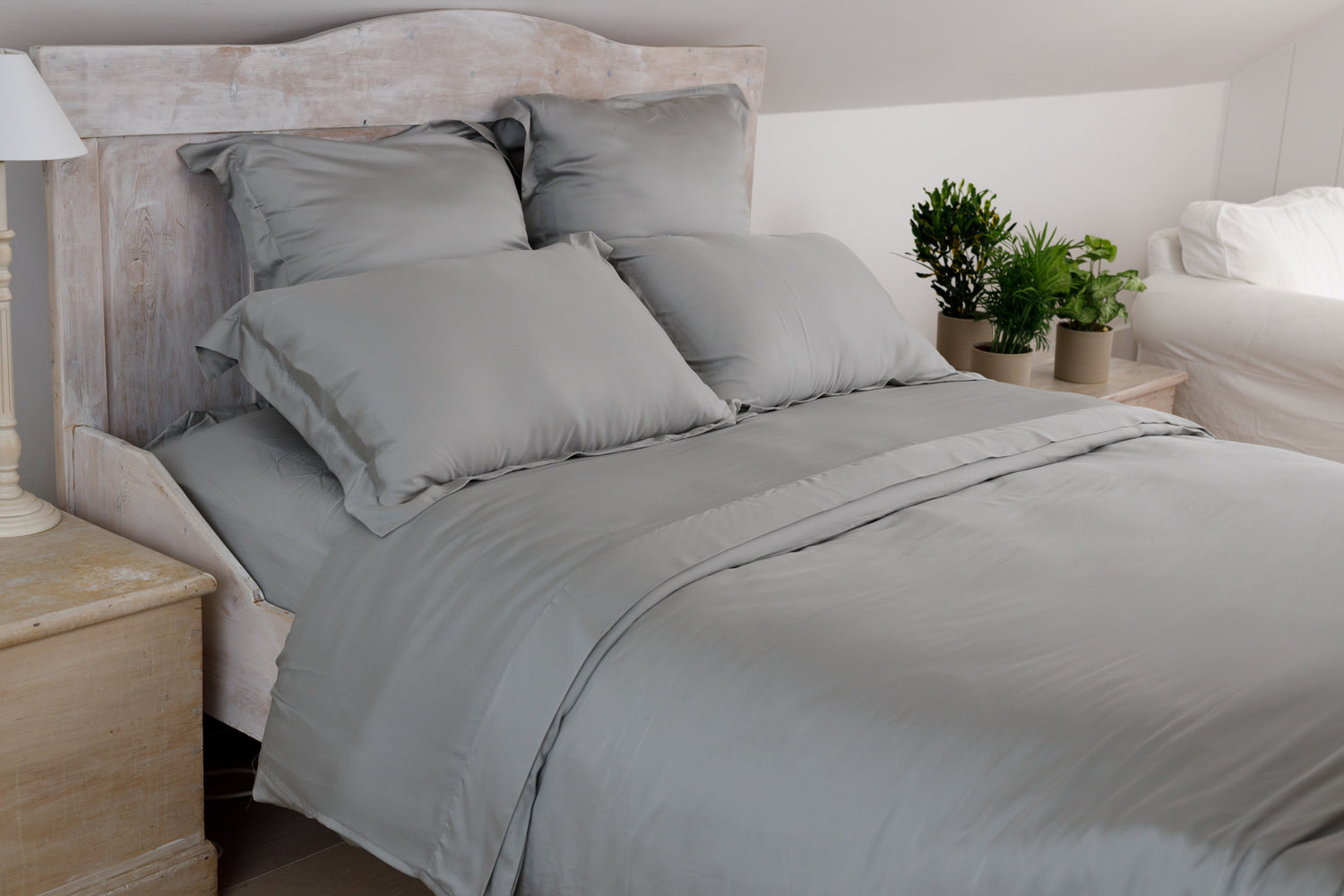With the sunny summer months comes the dreaded allergy season that impacts millions of Brits each and every year. And the bedroom is likely among the most problematic spaces in your home for sniffling and sneezing, with the warm temperatures elevating the struggle at night.
Fortunately, you don’t need to suffer any longer, thanks to our extensive list of tried-and-tested techniques to manage your dust and pollen allergies. So, what are you waiting for; check out our 21 tips for an allergy-free bedroom now!
What Are Allergies?
Allergies are one of the most common chronic conditions that affect millions around the world. According to Allergy UK, over 20% of the population suffers from one or more allergic reactions.
An allergic reaction occurs when your immune system recognizes a foreign substance as dangerous even when it isn’t. It then releases antibodies to fight the alien invaders and releases a compound called histamine.
When histamine release is due to an allergen, it results in inflammation in the skin, sinuses, digestive system, or airways.
Allergic reactions can range from mild discomfort to severe conditions like anaphylaxis. Common allergies include bees stings, pollen, pet fur, and dander. Common food allergies include nuts, soy, wheat, shellfish, and dairy.
What causes allergies in the home?
We all likely suffer from some form of allergy, even if it’s just hay fever during the warmer months. But there are some common causes of allergies in the home that you might not be aware of.
Dust mites
You might not want to think about dust mites in bedding, but they’re very real and feed on skin flakes we shed as we sleep. They generally congregate in the warmer parts of the bed, namely your pillows, mattress, and duvet, as well as fabrics and upholstery.
These microscopic bugs can cause big problems. They thrive in humid, warm environments and frequently live in bedding, feeding on our dead skin. Any mattress can contain up to 10 million dust mites!
Symptoms of a dust mite allergy include:
- Sneezing, wheezing, and coughing
- Nasal congestion or a “stuck” nose
- Constant runny nose
- Itchy and watery eyes
- Itchy nose, throat, or the roof of the mouth
- Postnasal drip
- Swelling in the face
- Clogged sinuses
Mould and mildew
Mould grows in moist and humid conditions, thriving on your dirty laundry, damp walls, and window condensation.
The “seeds”, called spores, can travel long distances and cause allergic reactions. They spread more in dry, windy weather. The mould season starts in July and ends in early autumn.
Indoor mould commonly collects in the kitchen and bathrooms but can be anywhere near water. You might have a mould allergy if you notice more sneezing or nasal irritation near damp areas like bathrooms and basements.
Animal dander and hair
Animal dander effectively means everything your pets might shed as they bound around your bedroom or cuddle you at night. This includes flakes of skin and saliva. It can also remain in your bedroom air for several hours, meaning you may well be breathing it in long into the night.
As many as 30% of allergy sufferers are allergic to their pets. Cat allergies are twice as common as dog allergies. An estimated 10% to 20% of the global population is allergic to pets.
Symptoms of a pet allergy are similar to the reactions to dust mites, as shown above.
Pollen - Hay Fever
Pollen is notorious for floating in the air for extended periods of time, affecting millions of sneezing Brits each year. And, unfortunately, it stays on your clothing all day too, meaning your constantly exposed if you’re not careful.
Also known as seasonal allergic rhinitis, hay fever is triggered by pollen from grass, trees, and plants. Hay fever can get worse from March to September when the weather is hot, and the winds pick up, helping the tiny pollen grains travel greater distances through the environment.
Grasses are the most common cause of hay fever. Some species of trees like cedar, oak, and birch, are known to produce highly allergenic pollen.
Cockroaches
These nasty little bugs lurk everywhere in a home. The saliva, faeces, and body parts that roaches shed can trigger allergic reactions similar to a dust mite allergy.
How to keep your bedroom allergy-free
During the summer, you bedroom can quickly become a hotspot of sneezing and allergy symptoms, thanks to the increased rate of pollen and warm breeding environment for mites.
Fortunately, you needn’t suffer, with our top tips for keeping your bedroom allergy-free. Read on to find a simple solution to your struggles.
1. Eliminate dust mites from your bed
If you find yourself struggling and sneezing at night, you might think you’re allergic to bed sheets, but in reality you may have dust mites hiding in between your sheets. These can trigger and worsen house allergies and asthma, making it difficult to sleep.
However, fortunately, they’re straightforward to get rid of; simply wash your bed sheets, duvet cover, and pillowcases every week on a hot wash, and dry in a hot tumble dryer.
Additionally, you can also find dust mite-proof bedding and covers for your pillows, sheets, and duvet, which will prevent the pesky pests from settling and breeding in your bed. Allergen-proof bed covers are ideal if your bedding can’t easily be washed (or maybe you just want a simple, no-fuss solution!).
2. Invest in hypoallergenic bedding
Choosing hypoallergenic bedding can go a long way towards relieving your allergies and asthma symptoms, as the moisture-wicking fabric is inhospitable for common house mites, preventing them from breeding and spreading.

Shop Ethical Bedding's hypoallergenic Ultimate Bundle Set
Use a hypoallergenic bedding material like Tencel or bamboo with antibacterial properties to create an unwelcoming environment for dust mites and germs.
Tencel is a fabric known for incredible breathability and comfort. It comes from eucalyptus trees and is produced and harvested sustainably. Tencel has been used in medical dressings to prevent germs and bacteria from surviving.
Using Tencel or other hypoallergenic fabrics as bedding material will reduce the potential of dust mites. Wash your bedding frequently to maintain a clean environment.
Hypoallergenic blanket, duvet cover, and pillowcase materials like bamboo and eucalyptus silk are naturally antimicrobial, meaning they repel mites, mould, and dust. But not only that, both materials are silky smooth and highly breathable, providing you with luxury sleep every night.
In addition to bedding, consider a hypoallergenic mattress made from latex. Latex is a naturally antimicrobial material that repels dust mites.
3. Keep pets out of your bedroom
Inviting your cat or dog into bed for a morning or evening cuddle might seem like a fun idea in the moment, but you’re making life more difficult for yourself in the long run. Hair and dander can all carry allergens, and make your bedroom a haven for dust mites to breed.
But not only that; your pets can unintentionally carry pollen from outside into your home, triggering or worsening asthma symptoms. If you do insist on sharing your bedroom with your pets from time to time, just make sure to vacuum more frequently!
4. Vacuum often

It might sound straightforward, but vacuuming your carpets on a regular basis can help to eliminate pesky allergens that linger in the fibres (including pet hair), saving you from struggling with symptoms throughout the night.
5. Deep clean your carpet regularly
As well as vacuuming to remove top-layer mites, mould, and dander, it’s essential to steam your carpet or put it through a deep clean at least once a month – especially if you invite your pets into your bedroom.
This will not only remove all allergens from your flooring, but also maintain a feeling of freshness throughout your bedroom. Just be sure to factor in the time it takes for your carpet to dry!
6. Consider switching out your carpet

If you’re struggling with indoor allergies, an effective solution might be to swap out your traditional carpet for allergen-free hardwood flooring or anti-allergy carpet – or failing that, washable rugs that you can clean regularly.
Carpets are perhaps the most problematic type of flooring when it comes to house allergies, forming the perfect breeding ground for mites and exposing you to uncomfortable dust throughout the night.
7. Protect your bedroom air
It might not have crossed your mind (and it’s not particularly pleasant to think about!), but you’re likely sharing your bedroom air with dust, mites, and mould, which can quickly begin to trigger allergic reactions. With this in mind, it’s well-worth taking action to ensure your air is allergen-free:
- Aim to keep humidity levels around 30-50%
- Regularly check your carpets for signs of mould and mildew, especially if you notice condensation on your windows.
- Empty your laundry basket every day, as piles of sweaty clothes are a breeding ground for mould and mites.
- If possible, try to install an air-filtration system that filters and cleans your bedroom air.
Following these tips should ensure your bedroom air remains fresh and protected against unwanted mites and mould.
8. Keep your bedroom at a lower temperature
Turning down the heating in your home can greatly reduce the effects of common house mites and mould, as each struggles to survive and breed in cooler conditions. Specifically, aim to keep the temperature in your home and bedroom below 25°C.
9. Use a dehumidifier
If you start to notice condensation on your windows or dampness on your walls, you may need a humidifier to reduce the moisture levels in your bedroom.
An effective dehumidifier will extract moisture from your air, reducing humidity levels to less than 50%. This will create a hostile environment for dust mites and mould, helping you to enjoy a more comfortable night’s sleep.
Top tip: When choosing a dehumidifier, make sure you find one that operates almost-silently, so you’re not disrupted during sleep!
10. Reduce the risk of cockroaches
Fortunately, cockroaches aren’t that common in the UK, but that doesn’t mean you shouldn’t be prepared for the worst – a few cockroach species do live in Britain, after all! If you are concerned about cockroaches, fear not; there are some simple ways to keep them out of your home:
- Fix all leaky pipes
- Avoid leaving wet clothes or towels on the floor, where possible
- Ensure all crumbs are vacuumed or swept away
- Keep food in air-tight containers
- Don’t leave dirty dishes on the side
Cockroaches can leave behind droppings, which can pose as a problem if you’re prone to allergies - or bring about symptoms, even if you’re not.
11. Keep your laundry bin outside of your bedroom
Sweaty or damp laundry can quickly become a hotspot of mites and mould, with more growing by the moment, so it’s important to keep your dirty clothes off your floor and in a laundry basket - preferable outside your bedroom to prevent spread and contamination. You should also take off your outdoor shoes before entering your bedroom, to limit the spread of allergens to your carpet or floor.
12. Keep house plants in your bedroom

While flowers can increase pollen pollution in your bedroom, and should ideally be kept in another room if you’re struggling with sneezing as you sleep, some house plants can actually help alleviate your indoor allergies. This is because they act as effective air filters against mould, which can be a trigger for many.
Not only are houseplants aesthetically pleasing, but NASA also proved them able to improve indoor air quality in a 1989 Clean Air Study. The study showed that an ideal number of 10 houseplants should be used in a 4m x 5m room. However, even a single houseplant improved air quality by 25%.
Houseplants for allergy sufferers do not produce any pollen to exacerbate the problem. As a bonus, some of these plants also can remove potentially dangerous chemicals like formaldehyde from the room.
NASA recommends the following plants:
- Mums
- Peace lilies
- Golden pothos
- Philodendron
- Gerbera daisies
- Areca palm
- Lady palm
- Bamboo palm
- Dracaena
13. Shower before getting into bed
During the course of the day, we pick up untold amounts of dust and pollen on our clothes, hair, and skin. So, when you enter your bedroom, you risk transferring these allergens to your bedding, furniture, and fabrics.
Having a shower or bath before getting into bed ensures you’re not bringing any unwanted pollen, mites, or dust with you under the covers, which will help you to get to sleep a little easier at night.
14. Consider curtain and blind material
Your curtains and blinds could be the ideal breeding ground for dust mites and mould, so it can be helpful to choose washable curtains made of hypo-allergenic, synthetic material – or failing that, plain cotton.
Or, if you have horizontal blinds, consider replacing them with vertical, roller-style blinds. These are easier to dust and wipe down, reducing the overall amount of dust, mites, and mould lingering around your windows.
15. Close your windows
One of the most effective ways of reducing humidity throughout your home is to keep your windows closed, and rely on air conditioning units and fans to keep your bedroom cool instead.
This helps to keep air circulating around your room, which prevents moisture and allergens from lingering. You should also regularly clean your windows and window frames of any condensation or mould.
16. Avoid strong odours and fumes
It might not be particularly ground breaking, but if you’re struggling with allergies and asthma, avoid strong odours and fumes where possible. Examples include cigarettes and smoke, strong perfumes, cleaning products, and aerosols (deodorants, hairspray etc).
17. Choose easy-to-clean furniture
Choosing easy-clean furniture will make cleansing your bedroom a straightforward task, allowing you to eliminate lingering dust, pollen, and mould with a single stroke, rather than having to deep clean upholstery and tricky fabrics. Examples of easy-clean materials include wood, leather, plastic, and metal.
18. Use a good quality air purifier
If you’re seriously struggling with bed allergies and asthma, you might want to consider investing in a high efficiency particulate air (HEPA) filter, to clear your bedroom air of dust, mites, pollen, and mould in moments. With one of these impressive machines, you can more confidently settle down for a comfortable night’s sleep.
The Air Change Per Hour (ACH) rating refers to the number of times all the air in the room gets filtered hourly. A higher ACH rating will indicate a more efficient air purifier. Folks with allergies should get purifiers with a 4x or 5x ACH rating, reducing the number of allergens in the room.
19. Close your wardrobe doors
While all the clothes in your wardrobe might be clean, that doesn’t mean they won’t contribute to your allergy struggles. In fact, hanging clothes quickly collect dust and other airborne particles, which can make them particularly troublesome. However, simply keeping your wardrobe and closet doors shut will prevent the dust and mites from spreading to your bedroom air.
20. Declutter your bedroom
Decluttering your bedroom gives your bedding and belongings space to breathe, and reduces the chance of dust settling in hidden corners and hard-to-reach places. That means limiting the amount of items on shelves, stripping back on fabric and upholstery, and moving books, magazines, and stationary to another room.
Donate unwanted bedding, books, magazines, and clothes to a charity or shelter. The less you have in your bedroom, the less surface dust will get to settle on.
And if you’re guilty of throwing things under your bed or piling up dirty washing on the floor, cut that out too! In short, if you’re wondering how to reduce dust in the bedroom, choose minimalism and take things back to basics and you’ll find yourself dusting far less frequently.
21. Don’t make your bed
It might go against your instincts, but skipping the morning routine of making your bed can actually help to alleviate the affects of asthma and other allergies. This is because dust mites thrive and love to breed in warm and humid conditions – just like under your duvet.
Instead, as a potential last resort if you’re seriously struggling, why not leave your blanket thrown over the side and your duvet untidily tucked away, and you might well see your symptoms disappear.

Conclusion
Despite your best efforts, sometimes it just isn’t enough. Over-the-counter medications like Allegra and Zyrtec are readily available to allergy sufferers. When in doubt, always consult a medical professional.
Hopefully, we’ve offered some useful tips you can implement the next time you find yourself suffering from a bout of sneezing, with most of our examples easy to apply. For even more insight from our sleep experts, head on over to the Ethical Bedding blog.


